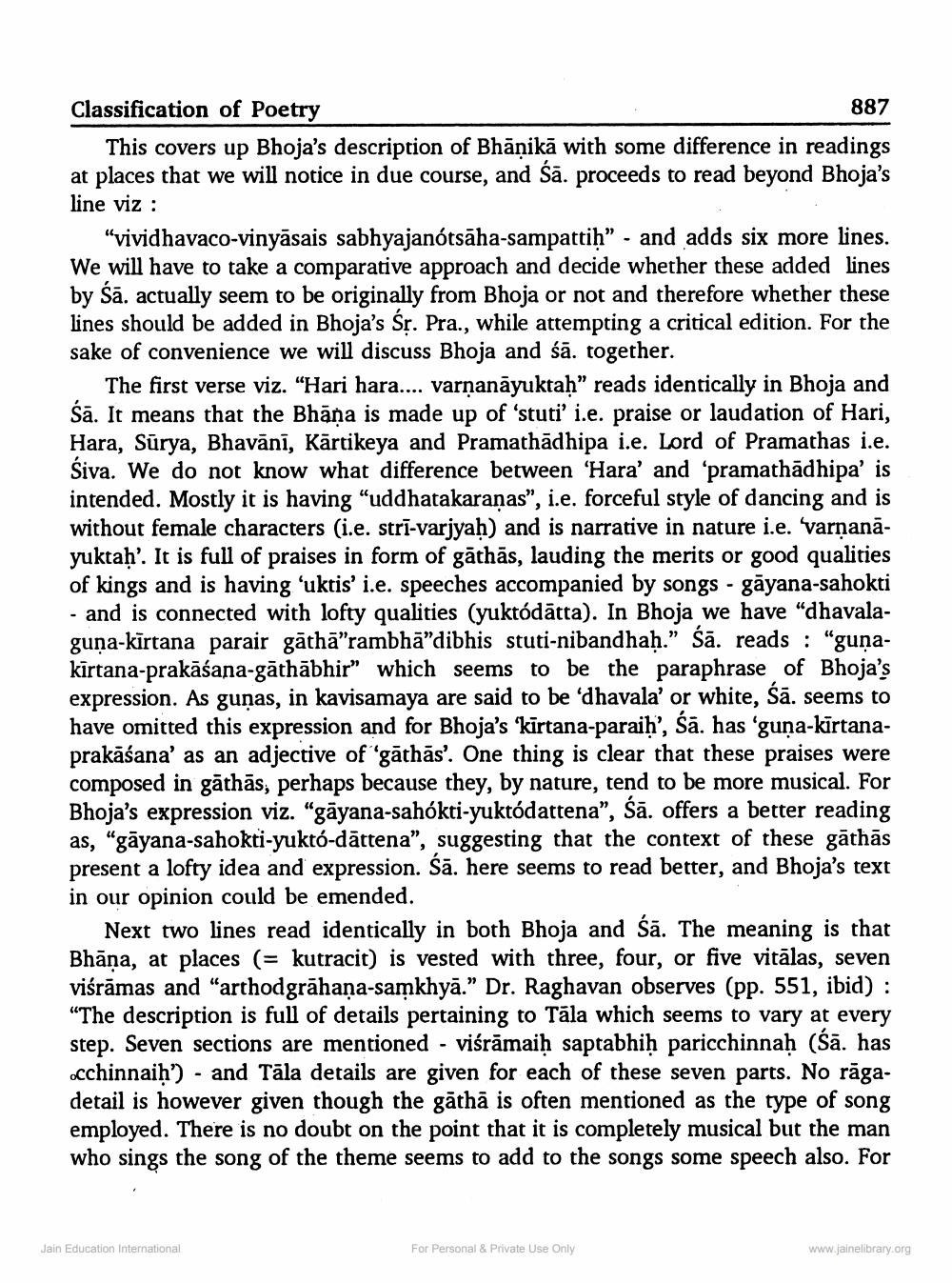________________
Classification of Poetry
887 This covers up Bhoja's description of Bhānikā with some difference in readings at places that we will notice in due course, and Sā. proceeds to read beyond Bhoja’s line viz :
"vividhavaco-vinyāsais sabhyajanótsāha-sampattih” - and adds six more lines. We will have to take a comparative approach and decide whether these added lines by Sa. actually seem to be originally from Bhoja or not and therefore whether these lines should be added in Bhoja's Śr. Pra., while attempting a critical edition. For the sake of convenience we will discuss Bhoja and śā. together.
The first verse viz. "Hari hara.... varnanāyuktah” reads identically in Bhoja and Śā. It means that the Bhāna is made up of 'stuti' i.e. praise or laudation of Hari, Hara, Sūrya, Bhavānī, Kārtikeya and Pramathādhipa i.e. Lord of Pramathas i.e. Siva. We do not know what difference between 'Hara' and 'pramathādhipa' is intended. Mostly it is having "uddhatakaranas”, i.e. forceful style of dancing and is without female characters (i.e. strī-varjyah) and is narrative in nature i.e. varnanāyuktah'. It is full of praises in form of gāthās, lauding the merits or good qualities of kings and is having 'uktis' i.e. speeches accompanied by songs - gāyana-sahokti - and is connected with lofty qualities (yuktódātra). In Bhoja we have "dhavalaguņa-kirtana parair gāthā"rambhā"dibhis stuti-nibandhah." Sā. reads : "gunakirtana-prakāśana-gāthābhir” which seems to be the paraphrase of Bhoja's expression. As gunas, in kavisamaya are said to be dhavala' or white, have omitted this expression and for Bhoja's 'kīrtana-paraih', Sa. has 'guna-kīrtanaprakāśana' as an adjective of gāthās'. One thing is clear that these praises were composed in gāthās, perhaps because they, by nature, tend to be more musical. For Bhoja's expression viz. "gāyana-sahókti-yuktódattena”, Sā. offers a better reading as, "gāyana-sahokti-yuktó-dāttena”, suggesting that the context of these gāthās
at a lofty idea and expression. Sā. here seems to read better, and Bhoja's text in our opinion could be emended.
Next two lines read identically in both Bhoja and sā. The meaning is that Bhāna, at places (= kutracit) is vested with three, four, or five vitālas, seven viśrāmas and "arthodgrāhana-samkhyā." Dr. Raghavan observes (pp. 551, ibid) : "The description is full of details pertaining to Tāla which seems to vary at every step. Seven sections are mentioned - viśrāmaih saptabhih paricchinnah (Sā. has
ih') - and Tāla details are given for each of these seven parts. No rāgadetail is however given though the gātha is often mentioned as the type of song employed. There is no doubt on the point that it is completely musical but the man who sings the song of the theme seems to add to the songs some speech also. For
Jain Education International
For Personal & Private Use Only
www.jainelibrary.org




